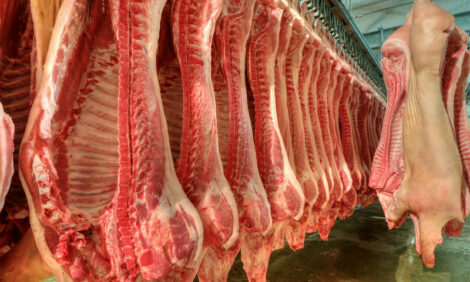



NPPC Agrees with New Livestock Pollution Rules
US - The National Pork Producers Council says it supports the tough new regulations covering livestock farms, saying they represent a major step forward in environmental protection. And it's stressed that most of its members are already in-line with the new requirements.The new Environmental Protection Agency rules will impose severe penalties on those who continue to pollute rivers and streams with manure runoff. NPPC says that modern, commercial hog farms, known as concentrated animal feeding operations (CAFOs), have essentially eliminated their water pollution problems and are confident its members will not fall foul of the new rules which are set to be issued late this summer. The comments were filed in response to EPA’s latest proposed changes in the CAFO water pollution regulations, which have been evolving through rule making and a court decision since 2003.
“These changes represent a monumental shift in the federal policy and regulations that govern animal feeding operations,” said NPPC President Bryan Black, a pork producer from Canal Winchester, Ohio. “They represent substantial improvements in water quality protection, and there is no question that as an entire sector, livestock and poultry agriculture will improve their water quality performance as a result.”
Zero Discharges
CAFO regulations issued in 2003 imposed a policy of zero discharges from large livestock and poultry farms. Covering approximately 5,000 large hog-feeding operations, they required producers to draw up detailed plans for managing manure and to obtain federal Clean Water Act (CWA) permits.
But a federal court decided in a 2005 case that EPA only had the authority under the CWA to require a permit for a CAFO to discharges not to operate. Since most swine CAFOs are designed, constructed, maintained and operated to meet a zero-discharge standard, few need – or would want – a CWA permit.
In its comments, NPPC cited data showing that, in eight key pork producing states, the average rate of hog-producing facilities discharging is less than 1 percent. “The rarity of these discharges … shows that a presumption that swine CAFOs are commonly discharging … is unwarranted,” said the organization.
EPA’s new rules propose that all CAFOs meet a zero-discharge standard. CAFOs that do not discharge or are not designed to discharge would not be required to obtain CWA permits. Such operations can voluntarily notify EPA that they meet the zero-discharge standard, which will protect them from enforcement actions.
Tough Fines
A CAFO that fails to obtain a CWA permit or to notify EPA that it meets the zero-discharge standard and subsequently has a discharge is subject to fines of up to $32,500 a day. These stiff penalties will provide a significant incentive to pork producers to protect water quality, even without a federal permit. Also, most producers without federal permits will still need state water quality permits. State standards generally meet or exceed federal standards.
NPPC took exception to a few points in the final draft of the EPA regulation. For example, it requested several changes to reduce the administrative burden on hog farmers trying to comply with the voluntary certification process. In addition, NPPC joined with other livestock organizations in arguing strongly that, under the Clean Water Act, EPA can fine a CAFO for discharging but has no authority to levy additional fines on it for not obtaining a CWA permit in the first place.








